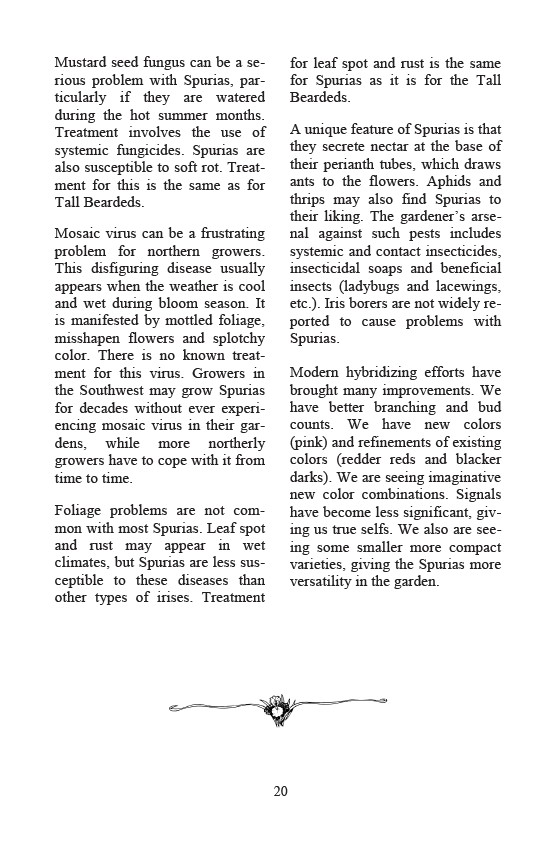
20
Mustard seed fungus can be a se-rious
problem with Spurias, par-ticularly
if they are watered
during the hot summer months.
Treatment involves the use of
systemic fungicides. Spurias are
also susceptible to soft rot. Treat-ment
for this is the same as for
Tall Beardeds.
Mosaic virus can be a frustrating
problem for northern growers.
This disfiguring disease usually
appears when the weather is cool
and wet during bloom season. It
is manifested by mottled foliage,
misshapen flowers and splotchy
color. There is no known treat-ment
for this virus. Growers in
the Southwest may grow Spurias
for decades without ever experi-encing
mosaic virus in their gar-dens,
while more northerly
growers have to cope with it from
time to time.
Foliage problems are not com-mon
with most Spurias. Leaf spot
and rust may appear in wet
climates, but Spurias are less sus-ceptible
to these diseases than
other types of irises. Treatment
for leaf spot and rust is the same
for Spurias as it is for the Tall
Beardeds.
A unique feature of Spurias is that
they secrete nectar at the base of
their perianth tubes, which draws
ants to the flowers. Aphids and
thrips may also find Spurias to
their liking. The gardener‟s arse-nal
against such pests includes
systemic and contact insecticides,
insecticidal soaps and beneficial
insects (ladybugs and lacewings,
etc.). Iris borers are not widely re-ported
to cause problems with
Spurias.
Modern hybridizing efforts have
brought many improvements. We
have better branching and bud
counts. We have new colors
(pink) and refinements of existing
colors (redder reds and blacker
darks). We are seeing imaginative
new color combinations. Signals
have become less significant, giv-ing
us true selfs. We also are see-ing
some smaller more compact
varieties, giving the Spurias more
versatility in the garden.